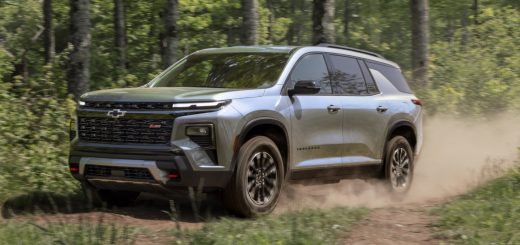Back in March, the Insurance Institute for Highway Safety (IIHS) released its research on the safety of the underride guards of heavy truck trailers. The results are quite eye-opening and even alarming.
You see, when a car and heavy truck collide, the car is at a serious disadvantage for a number of reasons. One of these reasons involves the general weakness of underride guards on the trailers, which are designed to block cars from driving under the trailers’ rear overhangs.
So the IIHS tested trailers from eight different manufacturers (which together make up over 80 percent of the heavy trailer truck market) by crashing a 2010 Chevy Malibu into their underride guards. Three tests were conducted on each trailer at a speed of 35 mph, including:
- Full overlap crash test
- 50 percent overlap crash test
- Narrow overlap crash test
While all eight trailers prevented underride during the full overlap crash test at 35 mph, and all but one prevented underride in the 50 percent overlap condition, only one (from Manac) prevented underride in the narrow overlap condition — making it the only trailer to prevent underride in all three test conditions.
What’s most unfortunate in these results is that underride guards are required by federal law in heavy truck trailers to prevent cars from sliding underneath during a rear-end crash, but most guards on the market today (with the exception of the one made by Manac) are minimally designed to meet that standard, and are not strong enough to keep cars sliding under the trailers even in crashes at speeds as low as 35 mph.
Ultimately, the problem is in the strength of the trailers’ guards: crush zones in the front of modern cars are designed to collapse in such a way so as to minimize risk of injury to occupants inside. But it only works in a crash with a trailer if the trailer’s underride guard stays in place when hit by a car. The Manac trailer, which passed all three overlap tests conducted by the IIHS, features a guard with vertical supports that have been moved outboard by the trailer’s engineers — thereby strengthening the ends of the guard.
The weakest trailer in IIHS’ previous tests in 2010 was made by Hyundai; it had the weakest guard and would have killed vehicle occupants that drove into the back of the trailer. Hyundai redesigned its trailer for 2012, and it held up in the full overlap and 50 percent overlap tests, but not in the narrow overlap test.
What’s perhaps even most worrying, however, is that all guards in the test met Canadian safety and crash standards. These standards are stronger than they are in the U.S., so it would seem that tougher safety standards are in order from both the American and Canadian legislation.
In this video, IIHS Chief Research Officer David Zuby explains the performance of most trailers in the study — and we cringe every time a new Malibu hits a trailer’s rear end, becoming totaled in the process. Our only consolation is that these Malibus are dying for the greater good:
Update: a big thanks to reader Rocky for providing the following video of similar underride tests being conducted in Europe. In short, underrun protection systems are necessary, but current EU specifications for them are too lax, as they are in North America:















Comments
The Europeans have been looking at this as well. Here is the tests performed by the German crash test dept based on the current standard and then their recommendation for a better standard. Thankfully the video is translated into English.
That’s a mighty sobering video. I’ll never look at the back of a tractor-trailer the same again. Reason being the Malibu used for the test is what I drive. It’s like wow that’s what would happen to it. Thanks for posting this and hopefully tougher standards will be enacted because of these tests.
The industry calls those extended beams “mansfield bars” because the under-ride standard was created after actress Jane Mansfield died in that kind of accident in ’67. Her Buick took a pretty bad hit. It figures, Hyundai is the worst.
The IIHS seems to imply that the Canadians or ‘Yurrup is ahead of the USA- we invented the standard, where the hell were they in 1967? The standard is updated periodically. America is not behind anyone, I’m sure it will get better when it’s revised next. USA-1. FYI, her daughter is “SVU” star Mariska Hargitay.
http://www.sparebumper.com/index.php?act=viewProd&productId=48
This type of stuff scares me. I’m a grown ass 29 year old man and I damn near freak at the thought of this. I’ve never been in a car accident as a passenger or driver and I hope it remains that way until I leave this earth. Kudos to the engineers who do tests like this to make it safer out there but… Ugh… Never mind… *logs off*
Fortunately you have statistics on your side. 56% of rear end collisions are full overlap and 30% are 2/3 overlap. Only 14.2% would be 1/3 overlap or less which would result in this type of accident. Statistics from the mechanical engineering firm Chalmers and sparebumper.com
These under-ride guards are set at 22″ off the ground which is still too high but there are pickup trucks you can drive off the new vehicle lot with bumpers higher than that.